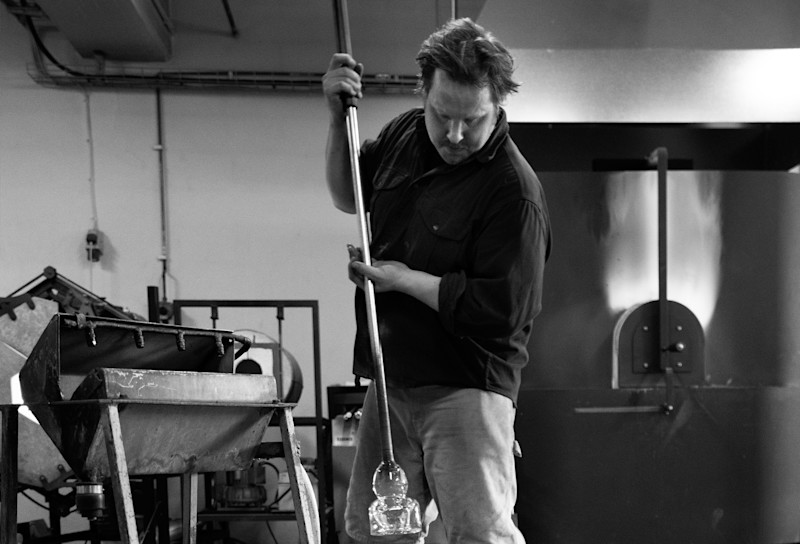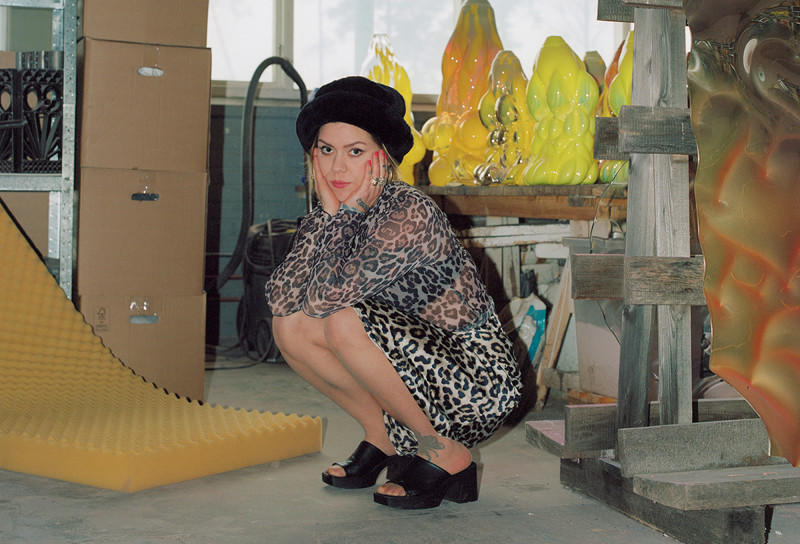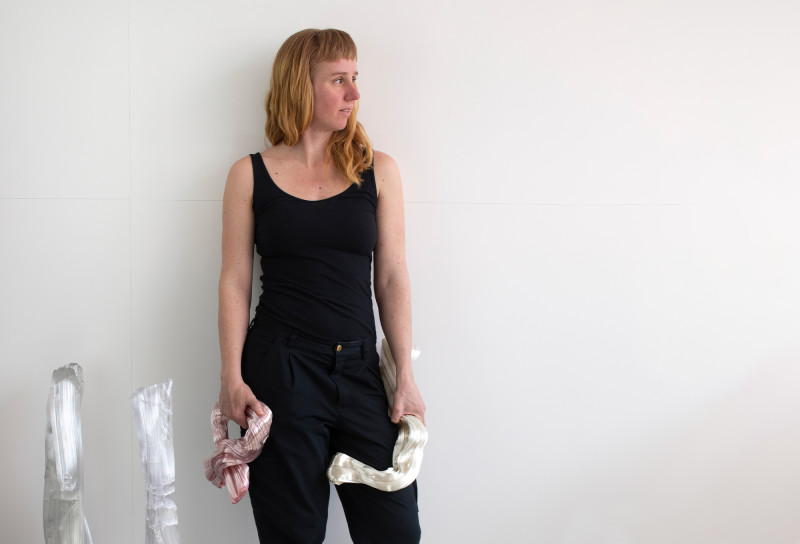Fredrik Nielsen
Interview
June 8, 2023

What’s your background, how did you start with glassblowing and art glass?
— I was born in Sturefors outside of Linköping and moved to Sigtuna when I was 10 years old. I had this enormous longing back to Sturefors and a sense of security and comfort. Secretly, I started tagging maps and bulletin boards with an ‘S’ to mark my connection to Sturefors. It was my first tag and I think some of
the sculptures at CFHILL may have one somewhere. It’s really symbolic of that boy’s impossible longing for something. I realised I wanted to start glassblowing when I saw My Life as a Dog, Lasse Hallström’s first movie, when I was 13 or 14 years old, and recognised myself in that boy and how he returned to the comfort of Småland again. So, I went to Småland in 1998 and thought I wanted to try this out. It was far from being an artist, I had a longing for the material and the security, the warmth, in some way. It was never about an aesthetic.
You have a very strong aesthetic today, how did you arrive at that?
– If I go back 10-15 years from now, I didn’t think that it was that cool to know a material, I just wanted to have really cool ideas. But then I had this burden from glassblowing which I thought was more problematic when I wanted to be conceptual and contemporary. Today, being able to do something with my hands is so great. The language in the material, I don’t think it blossoms until 20 years later, that’s when you’re able to really speak. For me, I don’t really care about aesthetics, more volume and mass. How it looks comes with the territory, somehow.

Can you tell us more about the size of your sculptures, they’re quite large for glass?
– Yes, they’re large. I often think about music or painting when I work. I think you need a certain volume to express oneself, it depends on where you are in your life or art, your career or the energy you have. The size of my sculptures, that’s my canvas size. I met Jim Butler, a painter from New York, in Seattle when I was attending the Pilchuck Glass School. He said that he loves painting transparence, he’s a super realistic painter so he likes painting so that the canvas disappears. He told me: “Nothing holds colour in space like glass.” What I’ve realised in the past few years is that I have the best glue in the world, like an autobahn, like a race car, like an instrument.
Can you tell us more about your technique?
– There’s a lot of technical controls with glassblowing, but I like to think of it like when Keith Jarrett gets ready to play the Köln concert: he doesn’t know what he’s going to play but he knows he’s playing a concert and he knows that he can play the piano. I know that I can blow glass, I know the framework, I know the size of my canvas. The rest is just vulnerability and taking a risk. It hurts, it’s not pleasurable. And those who know how to blow glass, they know that they can control the material to a certain point. Most will stay a few centimetres from that point and that’s when it still looks good from the pointer’s point of view, like Mick Jagger says. If you take a step over that line, it looks awful, you look like a beginner, but that’s where art might exist for me. It’s a long and hard process getting there, but once there, it’s not about making decisions, you just have to continue.

What about your titles?
– I love a title that’s cut-out of a movement. I like for the title to have a musicality. Take this sculpture Thinking of his Lonely Room, it gets something going. The sculpture might have something to do with it and it starts a fire in your own imagination surrounding the work. It’s important and a clue to who you are as a human, what you listen to, what you inject yourself with to create the energy around the making of an artwork.
You also create podiums for your works?
– For the piece Another Excuse 2023,I have covered a pallet in mirror plates. A lot of the time with glass, you are so busy with the sculpture that you don’t think about how it will be presented. I’ve often showed my sculpture on graffitied pallets, but now I’m covering it with stainless steel and I like the contrast it creates for that piece. But I really think it’s beautiful how Constantin Brancusi said that it’s about the piece’s relation to its stand.
Gallery







Fredrik Nielsen







Fredrik Nielsen ANOTER EXCUSE 2023, 2023, Blown and cast glass, 52 x 47 x 34 cm
Fredrik Nielsen Thinking of his Lonely Room, 2022, Blown and cast glass, 52 x 47 x 34 cm
Fredrik Nielsen Furtniture in the Garage, 2022, Blown and cast glass, 45 x 54 x 49 cm
Fredrik Nielsen Fantasy Red, 2023, Blown and casted glass and car paint, 29 x 24 x 17 cm
Fredrik Nielsen Venice - 1999, 2023, Blown and molded glass, 47 x 36 x 19 cm
Fredrik Nielsen Magic in the garbage bag, 2022, Blown and cast glass, 52 x 40 x 32 cm
Fredrik Nielsen ANOTER EXCUSE 2023, 2023, Blown and cast glass, 52 x 47 x 34 cm, Podium: Steel plated pallet, 2023, 15 x 120 x 80 cm



